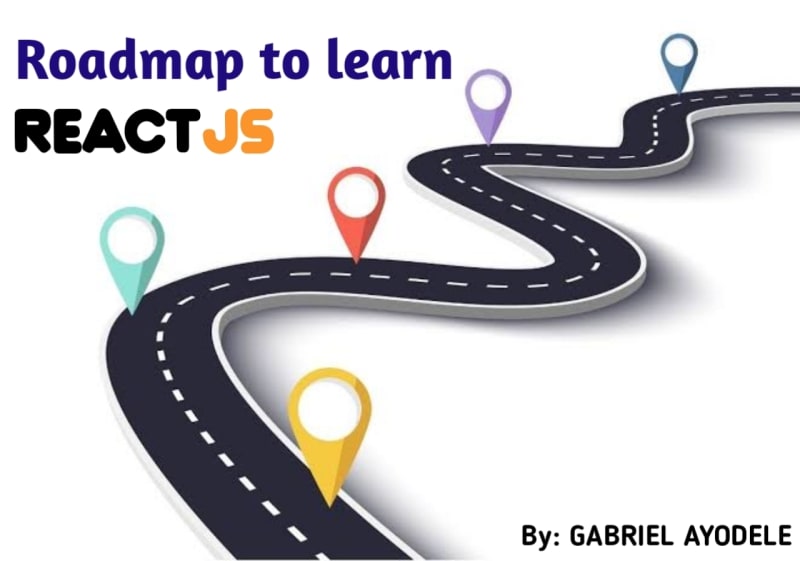JavaScript is a very popular programming language in modern days. It is commonly used in web development, making it an essential part of many programming projects.
JavaScript is not slow; it has a multitude of libraries that can ease the workload and make development more efficient and fast. In this article, we will focus on a JavaScript library called ReactJS.
React is a highly popular JavaScript library used for web and mobile app development. It's mostly used on the client side for websites and mobile applications. React is preferred by many developers due to its simplicity, easy maintenance, fast rendering, and reliable developer tools.
In this article, I'll discuss what you need to know about React and how to start your journey to becoming a React developer.
PREREQUISITES TO SET UP OUR DEVELOPMENT ENVIRONMENT
- A computer (laptop).
- An Integrated Development Environment (IDE): The most common choice is Microsoft Visual Studio Code (VSCode), but you can use any IDE of your choice.
- Node.js: This is software you need to install on your computer. Although you may not interact with it directly, you'll use a package from the software called NPM (Node Package Manager). NPM is essential for creating React apps and installing necessary packages.
PREREQUISITES IN TERMS OF KNOWLEDGE
- HTML: Knowledge of HTML is necessary because in React, you'll write your code in JSX (JavaScript XML), which is similar to HTML.
- CSS: Since you'll be building web or mobile applications with React, understanding CSS is crucial to style your applications and enhance their appearance.
- Basic Knowledge of JavaScript: JavaScript is a versatile prerequisite, but you only need a basic understanding. You should know how to declare variables using 'var,' 'let,' and 'const,' understand the differences between them, and when to use each.
- Functions: You should be familiar with how to declare and call functions in JavaScript.
- Template Literals: You need to be comfortable using backticks (
) for string concatenation. - Basic knowledge of ECMAScript 6: Understanding how to use arrow functions, spread syntax, and other basic ES6 features will enhance your development journey. You can learn additional concepts like object destructuring, module import, and export as needed.
BEGINNER TO REACT JS
As a newcomer to React, you must go through specific stages to prepare for the journey ahead. These stages include:
(i) Understanding the Concept of React: React is a JavaScript library that uses components to render user interfaces. It's easy to use and efficient, making development more accessible.
(ii) Setting up the Environment and Installation: React is installed using Node.js and NPM. You can create a React app by running 'npx create-react-app ' in your terminal. You can follow a similar process for creating mobile apps using 'npx create-expo-app.'
(iii) JSX and React Components: Practical coding in React involves using JSX, an extension similar to HTML. React components are essential because they're reusable, and a single page can consist of multiple components.
(iv) Lists and Keys: Learning to work with data in React, including mapping and rendering, is important. You'll assign unique keys to items in a list for specific functionality. Once you've mastered these operations, you can move on to the next phase of React development.
INTERMEDIATE REACT DEVELOPER
As an intermediate React developer, there are important concepts to learn to advance your skills:
Styling: Add styling to your applications using various methods, including libraries like Tailwind CSS, React-Bootstrap, SASS, Styled Components, or manually writing CSS.
React Hooks: Learn essential React hooks like 'useState,' 'useRef,' and 'useEffect' to enhance your development capabilities. Later, you can explore more advanced hooks like 'useReducer,' 'useContext,' and custom hooks.
React Context and Data Handling: Understand how to manage global state data in your project and share data using React Context.
Form Handling: Explore React's methods for handling forms to make your work more efficient and effective.
ADVANCED REACT DEVELOPER
As an advanced React developer, you'll delve into advanced functions and features:
State Management: Master state management with React, including using inbuilt hooks for global state like 'useContext.' Explore external libraries like Redux and Zustand for more advanced state management.
Routing in React: Use the 'react-router-dom' library to navigate between pages and URLs in your application.
Lazy Loading: Improve the user experience by implementing lazy loading for pages with large amounts of data or images.
Theming: Enhance the user experience by implementing features such as night mode and light mode toggles.
By following this roadmap and maintaining a consistent practice, you can become a confident React developer. While it may seem daunting at first, starting, practicing, and staying consistent will make the journey simpler and more achievable.



Top comments (0)